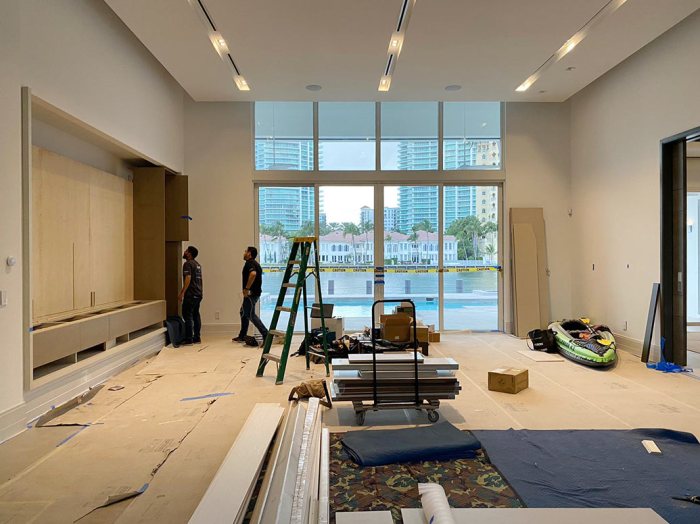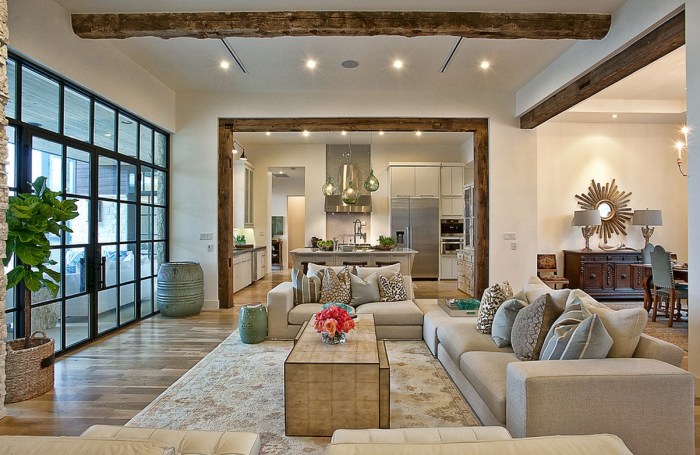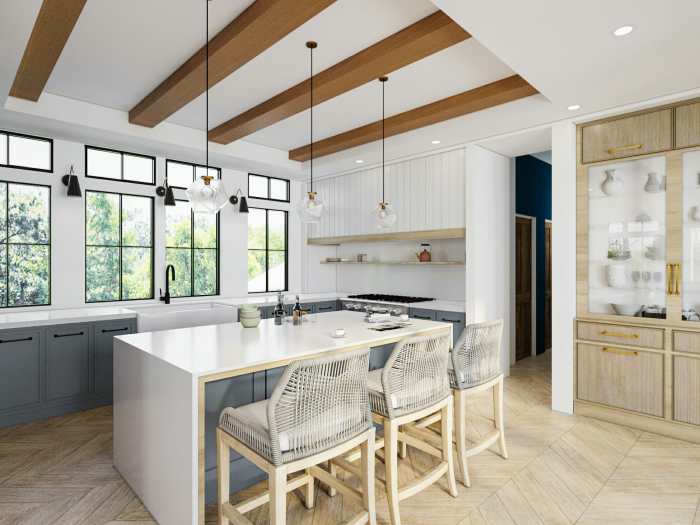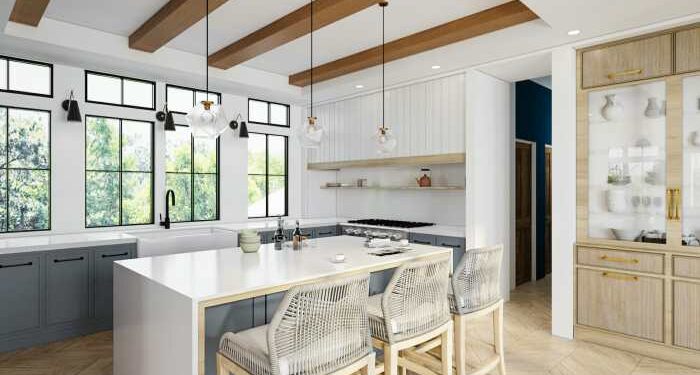As interior renovation takes center stage, this opening passage beckons readers into a world crafted with good knowledge, ensuring a reading experience that is both absorbing and distinctly original. Dive into the realm of interior renovation where aesthetics meet functionality, transforming spaces into personalized masterpieces that captivate the senses.
Importance of Interior Renovation

Interior renovation plays a crucial role in enhancing the overall value and appeal of a property. By updating the interiors, homeowners can significantly increase the market value of their homes while creating a more attractive living space.
Impact on Property Value
Interior renovation projects such as updating the kitchen, bathrooms, or flooring can have a direct impact on the property's value. For example, a modern and well-designed kitchen can significantly increase the resale value of a home. Investing in high-quality materials and finishes during renovation can also attract potential buyers and justify a higher selling price.
Enhancing Aesthetics
Interior renovation can completely transform the look and feel of a space, making it more visually appealing and modern. By updating outdated fixtures, colors, and layouts, homeowners can create a more stylish and inviting environment for themselves and their guests.
Functionality and Comfort
In addition to improving aesthetics, interior renovation can also enhance the functionality and comfort of a space. For example, reconfiguring the layout of a room can optimize the use of space and improve traffic flow. Upgrading insulation, lighting, and HVAC systems can also increase energy efficiency and overall comfort.
Planning for Interior Renovation

When embarking on an interior renovation project, proper planning is crucial to ensure a successful outcome. From setting a budget to choosing materials and deciding between professional help and DIY, each step plays a vital role in the overall process.
Setting a Budget and Timeline
- Begin by determining how much you are willing to spend on the renovation. Consider factors like labor costs, materials, permits, and unexpected expenses.
- Create a detailed budget breakdown to allocate funds for each aspect of the renovation, such as flooring, paint, fixtures, and furniture.
- Establish a realistic timeline for the project, taking into account any potential delays or setbacks that may arise.
- Consult with contractors or interior designers to get an estimate of the costs and time required for the renovation.
Choosing Materials for Renovation
- Research different materials available in the market and consider their durability, maintenance requirements, and aesthetic appeal.
- Ensure that the materials you choose complement the overall design and style you envision for your space.
- Compare prices from various suppliers to get the best deals without compromising on quality.
- Seek advice from professionals or experts in the field to guide you in selecting the most suitable materials for your renovation.
Hiring Professionals vs. DIY Renovation
- Evaluate your skills, experience, and time availability before deciding whether to tackle the renovation yourself or hire professionals.
- Consider the complexity of the project and whether it requires specialized knowledge or expertise that you may not possess.
- Weigh the pros and cons of hiring professionals, such as guaranteed quality work, versus the cost savings and personal satisfaction of DIY renovation.
- If opting for professional help, conduct thorough research, check references, and get multiple quotes before choosing the right contractor for the job.
Popular Interior Renovation Trends
Interior renovation trends are constantly evolving to meet the changing needs and preferences of homeowners. Let's explore some of the current popular trends in interior renovation.
Open-Concept Layouts
Open-concept layouts have become increasingly popular in interior renovation projects. This design trend involves removing walls and barriers to create a more spacious and interconnected living space. Open-concept layouts are favored for their ability to enhance natural light, improve airflow, and create a more social environment for homeowners and guests.
Sustainable Materials
The use of sustainable materials in interior renovation projects is a growing trend driven by the focus on environmental conservation and eco-friendly practices. Homeowners are opting for materials such as reclaimed wood, bamboo flooring, recycled glass countertops, and low-VOC paints to reduce their carbon footprint and create healthier indoor environments.
Traditional vs. Modern Styles
When it comes to interior renovation styles, there is a contrast between traditional and modern aesthetics. Traditional styles often feature ornate details, rich colors, and classic furniture pieces, while modern styles prioritize clean lines, minimalism, and neutral color palettes. Homeowners may choose to blend elements of both styles to create a unique and personalized look for their home.
Smart Home Technology
The emergence of smart home technology has revolutionized interior renovation projects, allowing homeowners to incorporate innovative solutions for convenience, security, and energy efficiency. From smart thermostats and lighting systems to automated blinds and home assistants, technology is seamlessly integrated into modern interior design to enhance the overall living experience.
Interior Renovation Challenges
When taking on an interior renovation project, there are several challenges that homeowners may encounter. From budget constraints to structural issues, it's essential to be prepared for these obstacles to ensure a successful renovation process.
Budget Constraints
One of the most common challenges faced during interior renovation projects is managing budget constraints. Renovations can quickly become expensive, especially when unexpected costs arise. To overcome this challenge, it's crucial to set a realistic budget from the start and allocate funds wisely.
Consider prioritizing essential upgrades and be prepared to make compromises to stay within budget.
Addressing Structural Issues
Another important aspect of interior renovation is addressing any structural issues that may be present in the home. Ignoring structural problems can lead to more significant issues down the line and compromise the safety and integrity of the property. It's essential to work with a professional contractor or structural engineer to identify and address any structural issues before proceeding with cosmetic upgrades.
Managing Stress
Renovations can be incredibly stressful, especially when living in the home during the renovation process. To manage stress effectively, it's essential to plan ahead, set realistic timelines, and communicate openly with your renovation team. Establishing clear expectations and maintaining open lines of communication can help alleviate stress and ensure a smoother renovation experience.
Last Point

In conclusion, interior renovation is a transformative process that not only enhances the look and feel of a space but also adds value to your property. Embrace the latest trends, navigate through challenges, and embark on a journey towards creating your dream living environment.
Let your imagination run wild as you embark on the exciting adventure of interior renovation.
FAQ Compilation
How does interior renovation impact property value?
Interior renovation can significantly increase the value of a property by enhancing its overall appeal and functionality, attracting potential buyers or tenants.
Why is it important to set a budget for interior renovation?
Setting a budget ensures that you stay within financial limits and helps prioritize where to allocate funds for the renovation project.
What are some common challenges faced during interior renovation projects?
Common challenges include budget constraints, unexpected structural issues, and the stress associated with managing the renovation process.












